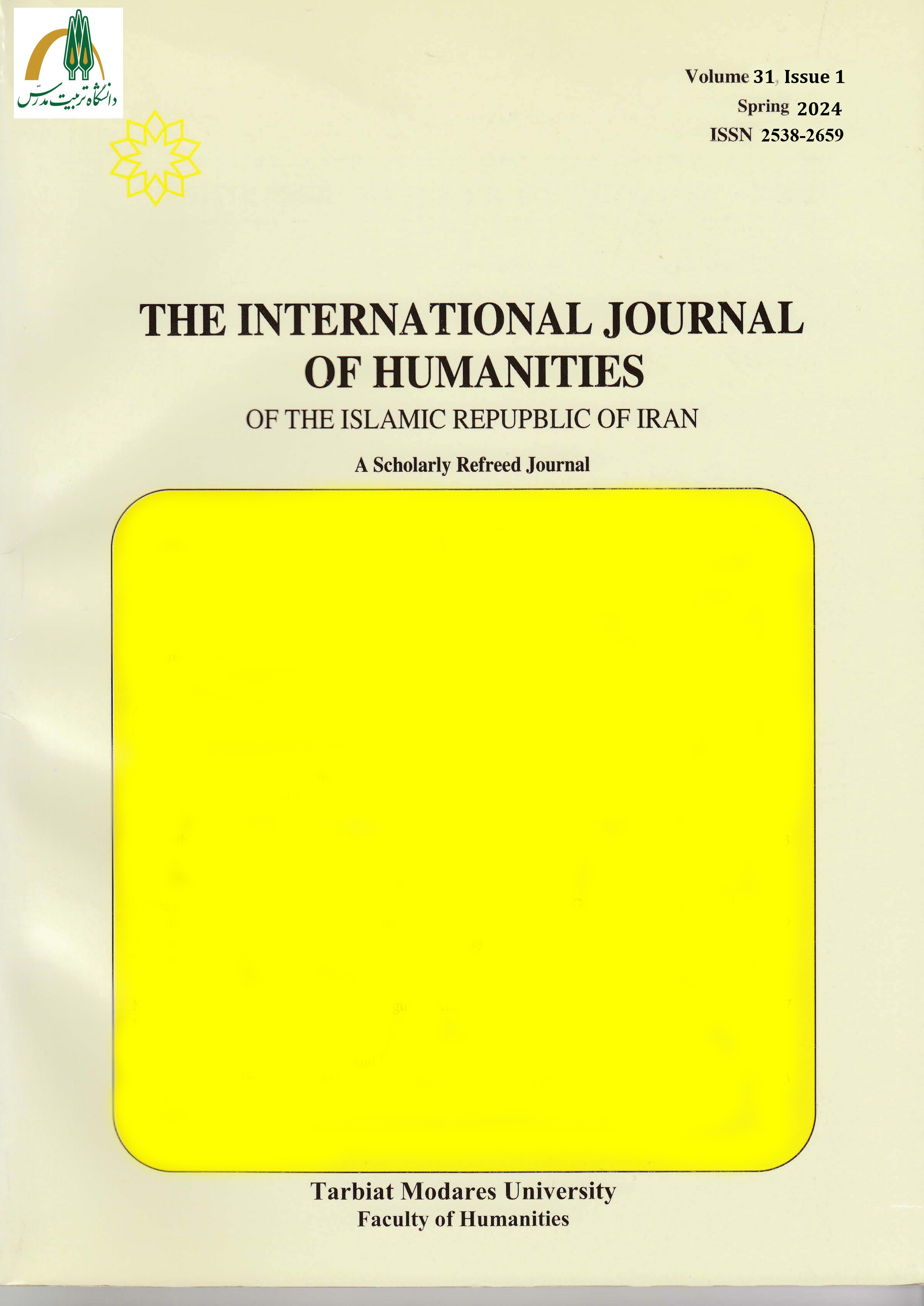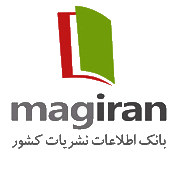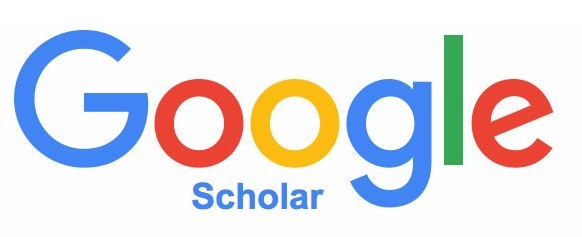1. Editorial Policies
1.1 Peer Review Policy
Peer review process in TMU journals is mostly double-blinded in which the reviewer’s name is unknown to the author and, vice versa. Each manuscript is reviewed by at least two referees. The review process is done as quickly as possible, and an editorial decision is normally made within 6 - 8 weeks of submission.
Manuscripts are initially reviewed by the Editors and only those in accord with the aims and scope of the journal which advance its scientific and editorial standards are sent for outside review.
1.2 Authorship
The list of authors should include anyone who has significantly contributed to the writing of the article. Relative scientific or professional influences of contributors should be considered while specifying principal authorship, authorship order, and other publication credits. In multiple-authored articles which are derived from a student’s dissertation or thesis, normally the name of the student is listed as the principal author.
2. Publishing Policies
2.1 TMU Press
TMU Press accepts all the terms and conditions of Committee on Publication Ethics (COPE). Authors may refer to the Committee on Publication Ethics’ International Standards for Authors for comprehensive information.
2.1.1 Plagiarism
Plagiarism or other breaches in publication are taken extremely serious in TMU Press. The rights of authors are protected and claims of plagiarism or misuse of articles published in the journal are investigated. Articles submitted are checked using duplication-checking software. If an article is found to have plagiarized other work or contained third-party copyright material without authorization or adequate acknowledgement, or where authorship of the article is contested, TMU Press reserves the right to take action including, but not limited to: publishing an erratum or corrigendum; removing the article from the journal; taking up the matter with the head of department or dean of the author’s institution and/or relevant academic bodies or societies; proscription of the author from publication in the journal or proper legal action.
Plagiarism as it is described in wikipedia “is the "wrongful appropriation" and "stealing and publication" of another author's "language, thoughts, ideas, or expressions" and the representation of them as one's own original work. The idea remains problematic with unclear definitions and unclear rules..
Plagiarism is not in itself a crime, but can constitute copyright infringement. In academia and industry, it is a serious ethical offense. Plagiarism and copyright infringement overlap to a considerable extent, but they are not equivalent concepts, and many types of plagiarism do not constitute copyright infringement, which is defined by copyright law and may be adjudicated by courts. Plagiarism is not defined or punished by law, but rather by institutions (including professional associations, educational institutions, and commercial entities, such as publishing companies).”
2.2 Experimentation ethics
authors who study on human subjects need to state that in the materials and methods section: a) patients’ consent and b) authors specify whether the procedures followed have been gauged by a responsible review committee. Where no formal committee is available the research must be in accordance with Helsinki Declaration as revised in 2013. Where animals are included in the research all animals should have received human care according to the criteria outlined in the Guide for the Care and Use of Laboratory Animals prepared by the National Academy of Science and published by the National Institutes of Health.(NIH publication 23-86, revised 1985)
3. How to submit your manuscript
Prior to submitting your manuscript, make sure you have carefully read and adhere to all the following guidelines and instructions to authors. Needless to say, manuscripts not in line with these instructions will be returned.
TMU journals have no word limit. Preliminary demands on appropriate topics may be emailed to the Editor. Each manuscript should comprise of a title page with full title. In order for double-blinded review to happen, each author’s full name with their affiliation and current address/phone/fax/email information along with a brief biographical note needs to be provided on a separate page. Manuscripts which meet all the criteria in the Manuscript Submission Guidelines can be sent to the Editor.
Covering letter: To every submission attach a covering a letter approving that all authors have agreed to the submission. The letter should be written and signed by the corresponding author on behalf of all authors. It should also confirm that the manuscript has not been previously published nor is being considered for publication elsewhere. It also should include authors’ completed contact information such as addresses, telephone and fax numbers, and e-mail.
4. Journal copyright issues
For the author, as the holder of the rights, it is required by TMU Press to sign Journal Contributor’s Publishing Agreement. The Journal Contributor’s Publishing Agreement is an exclusive license agreement assuring that the author will preserve the work’s copyright, however, it also provides TMU Press with the only and exclusive right and license to publish for the complete lawful period of copyright. Nevertheless, there may be cases of exception, when the copyright is needed or proffered to be assigned by some owner other than TMU Press..
Issues related to copyright violation, plagiarism or any other deviations from best practice in publication are taken very seriously by TMU Press.. We are dedicated to protect our authors’ rights, and shall always investigate any reports concerning plagiarism or misapplication of articles you publish in the journal. Likewise, we are bound to keep the journal away from any case of misuse. We employ duplication-checking software to check the articles submitted to the journal. If it turns out that the article is an instance of plagiarism from other works, or if some copyright material is included in the submitted article without prior permission or proper acknowledgement, or if there are disputes over the authorship of the article, we shall maintain our right to take necessary actions. We may publish an erratum or corrigendum (correction); remove the article from Journal; take up the issue to the head of the institution, department or any other pertinent academic society or take any other lawful action, such as prohibiting the author from publishing articles in this specific journal or all the journals belonging to TMU Press.
It is essential for you to confirm a statement of conflicting interests in your Journal Contributor’s Publishing Agreement.
5. Declaration of conflicting interests
Your statements should be placed at the end of your manuscript, after acknowledgements and before the references. This part should have a heading: ‘Statement of Conflicting Interests. If there is no statement, in your article under this heading will be printed ‘None Stated’. Conversely, you may prefer to express that ‘
The Author(s) state(s) that there is no conflict of interest’.
When you make a statement, please bear in mind that the disclosure information need to be specific, and include any financial relationship that exists among authors of the article and any supporting institute and the for-profit interests the institute signifies as well as any for-profit product which is discussed or implicitly mentioned in the article.
Any marketable or monetary contributions that may signify the presence of a conflict of interest should be made known in the covering letter that goes with your article to help the Editor decide if you have made adequate disclosure in the Statement of Conflicting Interests you provide in your article.
6. Acknowledgements
You should include your acknowledgements at the end of your article, before the Statement of Conflicting Interests (if there are any). It should also precede your notes and References.
The ‘Acknowledgements’ section should include a list of any contributors who lack necessary conditions for authorship. For example, you may acknowledge those who only provided technical help, those who assisted you in writing, or any authority who helped you merely through general support. Authors are required to mention if they have been helped in writing, and should disclose the identity of the party that has paid for this help.
6.1 Funding Acknowledgement
All writers are asked to report their funding on a regular basis and under a separate heading. You need to affirm that: “this research received no specific grant from any funding agency in the public, commercial, or not-for-profit sectors.”
All research articles are required to have a funding acknowledgement in the form of the sentence below. The name of the funding agency must be written in full, followed by the grant number in square brackets:
This work was supported by the Tarbiat Modares University [grant number xxx].
In case the paper has various grant numbers, they should be divided by comma and space. If the research was financed by numerous agencies, the different agencies should be mentioned in the acknowledgment, separated by semi-colon, with ‘and’ before the final name, as follows:
This work was supported by the Tarbiat Modares University [grant numbers xxxx, yyyy]; the Tehran University [grant number zzzz]; and the Ministry of Technologies and Sciences [grant number aaaa].
Occasionally, a research is not funded by a particular project funding, but from the block grant and other resources of a university, college or other research institution. In cases where no specific granting has been provided, researchers are required to use the following sentence: “This research received no specific grant from any funding agency in the public, commercial, or not-for-profit sectors.”
Under the separate heading of Funding, take in this information directly after any other Acknowledgements and before your Declaration of Conflicting Interests, any Notes and References.
7. Permissions
It is authors’ responsibility to attain permission from copyright holders for copying figures, tables, illustrations etc. previously published.
8. Manuscript style
8.1 File types
Electronic files conforming to the journal's guidelines will be accepted. A preferred format for the text and tables of your manuscript is Word DOC.
8.2 Journal Style
To review TMU Press guidelines click here.
At the top of each review the book details should be given in this format. Title, Author, date of publication. Place: publisher, 000 pp. ISBN, price (hbk), ISBN, price (pbk)
8.3 Reference Style
TMU Press journals operate either Vancouver or Harvard reference style, depending on the journal.
Click here to review the guideline to review the guidelines on Vancouver style to make sure your text accords with this style of referencing.
Click here to review the guideline to review the guidelines on Harvard style to make sure your text accords with this style of referencing.
8.4 Manuscript Preparation
- double-spaced
- right and left margins: a minimum of 3cm
- Head and foot. 5cm at
- Text should be standard 10 or 12 point.
8.4.1 Title, Keywords and Abstracts
The title, keywords and abstract helps readers find your article easier and ensure a better readership.
8.4.2 Corresponding Author Contact details
Full contact details are needed for the corresponding author. For other writers academic affiliation is required. To assist anonymous peer review this information should be presented independently to the main text of the article.
8.4.3 Guidelines for submitting artwork, figures and other graphics
8.4.3.1 Figures
1. Figures are supposed to include in the Microsoft Word file of the text.
2. Number figures should appear in the order of appearance in the manuscript
3. The abbreviation ‘Fig’ should be used to cite the figures in the manuscript and in the Figures legend.
4. For figures with several parts, each part should be labeled alphabetically (A, B, C, etc.) as part of the figure in the upper left spot of the figure.
5. Captions should start, for instance, Figure 1. ,with a bold full stop and a full stop at the end. In case there are more than one line captions should be left aligned and justified.
6. Figures used from other publications need permission. Some publishers ask for certain text, e.g. Elsevier.
7. Where there’s a permission entailed it should appear underneath the number (Vancouver), author, and date (Harvard).
8. Photographs and other scanned images must have a resolution of at least 300 dpi.
9. Only Microsoft Word type is acceptable. In case you do try to convert from PowerPoint to one of the following file types, PDF, Power Point, Adobe Photoshop, TIFF, be very careful to compare the final version with your original.
10. Legends for figures appear on a different page after the References. Figures and legends need to be apprehensible without reading the manuscript.
8.4.3.2 Lists
1. In case of incomplete sentences and/or phrases use bullet points. Start list with a colon and end it with a full point.
2. Where there is more than one sentence, use 1. 2. 3. Start list with a full point/semicolon and end it with a full point.
3. Left align bullets and indent the text. Lists should be set apart from the rest of the text with a line space.
4. All equation numbers should come in parentheses and be right aligned
8.4.3.3 Tables
1. Table headings need to be aligned left in all cases such as when they are related to various columns.
2. Tables need to be prepared using the "Table" feature of Microsoft Word software. Tables prepared using Excel or other spreadsheet programs are not usable.
3. Number tables sequentially and cite in the manuscripts as Table 1, Table 2 etc.
4. The word ‘Table’ should be written in full.
5. Number the tables in their order of appearance in the manuscript.
6. Rules used for tables must be minimal horizontal to ensure clarity
7. Tables should have clear titles and explanatory footnotes (labeled with lower-case letters, in alphabetical order)
8. Do not repeat details provided in the main document.
9. Dates in Tables should be shortened to, for instance, 5 Jun 12.
10. Captions should appear left aligned, above the table.
11. Use superscripts letters a, b, c, etc., for footnotes in the table
8.4.4 Guidelines for submitting supplemental files
TMU Press does not currently accept supplemental files.
9. after acceptance
9.1 Proof
PDF of the proofs will be emailed to the corresponding author.
9.2 E-Prints
TMU Press journals are all open access free journals and the PDF of all their articles will be available after acceptance.
10. Manuscript Content
11. Manuscript Main File
Main file of manuscript should include the following parts:
11.1 Full Title of Manuscript
11.2 Abstract
The manuscript first page starts with an Abstract. The Abstract should be clear enough to provide the reader with a comprehensive gist of the article. Avoid using reference citations.
11.3 Keywords
Provide up to 5 keywords. Keywords should express the precise content of the manuscript, as they are used for indexing purposes.
11.4 Background
The background needs to be briefed, with no subheadings and should provide the reader with information needed for understanding the manuscript.
11.5 Objectives
Objectives should describe the main purpose(s) of the research.
11.6 Materials and Methods
It contains necessary information and procedures in order for other researchers to be able to repeat it. Subsections can be considered where a variety of different methods are used.
11.7 Results
This part may contain tables, list and figures. Focus on the important points of results in this section but avoid repeating information provided in tables or figures. This section can contain up to 6 tables/figures.
11.8 Discussion
Information here is different from that of the results.
11.9 Conclusion
This part should indicate the final conclusion of the study in brief.
11.10 Conflict of Interests
The authors must declare any kind of conflict of interest in their research.
11.11 Authors’ Contributions
All authors contributions in research process need to appear in this section.
11.12 Acknowledgements
Refer to part 6 of this guide.
11.13 References
The accuracy of all references needs to be checked by the author. Authors need to ensure that the cited references in the text match with the list of references in the end of the article. The style of referencing depending on the journal could be either Vancouver or Harvard. However consistency needs to be preserved. References come right after the Funding acknowledgments and before the legends.
11.14 Legends
Legends appear after references on a separate page. They should be comprehensible without reading the manuscripts.
|
Paper Type
|
Maximum Word Length
|
Abstract Length
|
References
|
Manuscript Template
|
|
Original Articles
|
5000
|
Structured-up to 200 words
|
Up to 35
|
 |
|
Reviews
|
No limit
|
Unstructured-up to 150 words
|
No limit
|
 |
|
Case Reports
|
1,000 words
|
Unstructured-up to 100 words
|
10 or less
|
 |
|
Letters
|
500 words
|
No abstract
|
10-15
|
No template
|

















































.png)






